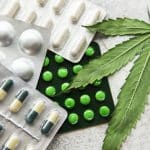The final frontier is opening up, but this time, it’s not just for astronauts or scientists. Space tourism is becoming a reality, with companies like SpaceX, Virgin Galactic, and others leading the way. The potential of this industry is immense, and as the technology continues to advance, the possibilities for travel beyond Earth are expanding. This article will explore the current state of space tourism, the companies that are pioneering this industry, and what the future of space travel could look like.
The Dawn of Space Tourism
The idea of space tourism has been around for a while, but it’s only now that we’re seeing it become a reality. Advances in technology and an increase in commercial interest have brought us to this exciting new era of space exploration.
Also read : What are the different tattoo styles ?
The development of reusable spacecraft has been a game changer in this regard. The ability to launch, land, and launch again not only reduces costs but also makes frequent trips to space more feasible. SpaceX, the company founded by Elon Musk, has been at the forefront of this innovation with its Falcon and Starship rockets.
Virgin Galactic, under the leadership of Sir Richard Branson, is another company making waves in the space tourism industry. Their spacecraft, VSS Unity, has already completed several successful test flights, paving the way for commercial operations to begin.
In the same genre : What are the challenges of living in a hyperconnected world?
It’s clear that the industry is ready for takeoff. But what will this new form of tourism look like?
The Space Tourism Experience
Space tourism isn’t just about getting up there. It’s about the experience. Companies are promising not just a trip to space, but a journey that will leave tourists with lifelong memories.
SpaceX, for example, plans to take tourists on a multi-day journey around the Earth, providing them with stunning views of our planet and the vast expanse of space. Virgin Galactic, on the other hand, offers a somewhat different experience. Their flights are suborbital, meaning they go to the edge of space and come back down. The journey lasts just a few hours, but it promises to be a thrilling ride, with tourists experiencing a few minutes of weightlessness and a view of Earth from space.
These are just the early stages of space tourism. As the technology advances and companies gain more experience, the offerings will surely become more diverse and exciting.
The Companies Pioneering Space Tourism
As mentioned earlier, SpaceX and Virgin Galactic are two of the leading companies in the space tourism industry. However, they are not alone. Blue Origin, founded by Jeff Bezos, is another contender. The company’s New Shepard spacecraft has also successfully carried out several suborbital test flights.
These companies have not only made significant strides in terms of technology, but they have also begun to shape the regulatory framework for space tourism. They work closely with institutions like the Federal Aviation Administration and the National Aeronautics and Space Administration in the United States to ensure that space tourism can be conducted safely and responsibly.
In addition to these giants, there are also smaller companies and startups contributing to the industry. Companies like Space Perspective offer unique experiences such as high-altitude balloon flights, while others like Zero2Infinity are working on their own spacecraft for space tourism.
The Potential and Future of Space Tourism
Space tourism has immense potential. The industry is still in its infancy, but the possibilities are endless. For instance, imagine a hotel in orbit around Earth, or a lunar base where tourists can visit. These ideas may sound like science fiction, but with the rate of technological advancements, they could become reality sooner than we think.
However, there are also challenges that need to be overcome. Space tourism is currently a very expensive proposition, putting it out of reach for most people. Companies will need to find ways to bring down costs in order to make space tourism more accessible.
Moreover, there are also environmental and regulatory considerations. The launch and re-entry of spacecraft can have environmental impacts, and there are also issues related to space debris. The industry will need to address these challenges in order to ensure its sustainable development.
Despite these challenges, the future of space tourism looks bright. With each successful test flight, we are one step closer to making space travel a reality for more people. And while the journey to that future may be fraught with challenges, the rewards promise to be truly out-of-this-world.
The Exciting Future of Space Tourism
Looking towards the horizon, a growing number of companies are emerging to take their own slice of the space tourism pie. Among them, a company named Orion Span has plans to launch the first-ever luxury space hotel, the “Aurora Station”, aiming to offer a 12-day space tourism experience by 2027. This would provide space tourists with an unparalleled opportunity to truly live in space, rather than just visiting it.
Another company, Space Adventures, has already sent several space tourists to the International Space Station using Russian Soyuz spacecraft. In fact, they are planning a mission to take space tourists on a journey around the moon, a testament to the bold ambitions present in the industry.
The use of reusable rockets by SpaceX and Blue Origin is also a promising development, as it could drastically reduce the cost of space travel, making it more accessible to a larger number of people. It’s a truly exciting time for the industry, filled with promise and potential.
However, it’s not just about the thrilling prospect of floating in zero gravity or gazing at the Earth from space. It’s also about the broader implications for humanity. Space tourism could pave the way for permanent human settlements in space, offering us a “plan B” in case life on Earth becomes unsustainable. It could also bring about a new era of scientific discovery and technological innovation, as the challenges of living and working in space require us to push the boundaries of what we currently know and can do.
Conclusion: Embarking on the Adventure of a Lifetime
In conclusion, the dawn of space tourism is upon us, bringing with it a slew of spectacular possibilities. From brief suborbital flights to multi-day journeys around Earth, the options for space tourists are set to expand dramatically in the coming years. Companies like SpaceX, Virgin Galactic, and Blue Origin are leading the way, while others like Orion Span and Space Adventures are offering their own unique contributions.
There are, of course, numerous challenges to overcome. From reducing the cost of space travel to addressing environmental and regulatory issues, there’s a lot of work to be done before space tourism can truly go mainstream. But with the pace of progress we’re currently seeing, it’s more a question of ‘when’ rather than ‘if’ these challenges will be surmounted.
Space tourism is not just about giving people the thrilling experience of space travel. It’s also about pushing the boundaries of human exploration and technological innovation, and potentially, ensuring the long-term survival of our species. The next great adventure is about to begin, and it’s going to be out of this world.











